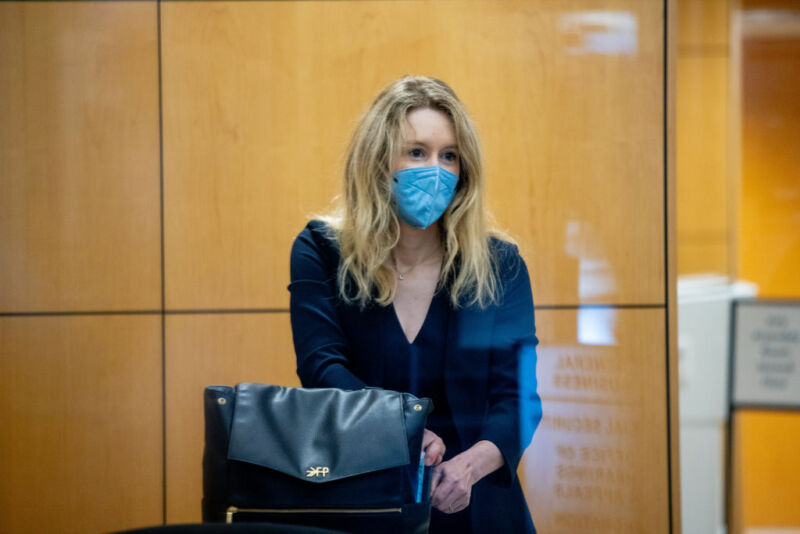
There is a saying in the startup world that many companies try to fake it till they make it. From yesterday’s testimony in the criminal trial of Theranos founder Elizabeth Holmes, it sounds like her company took that saying to heart.
Prosecutors questioned Daniel Edlin, a former product manager, about Theranos’ investor pitches and other relationships, trying to build the case that the blood-testing startup knowingly misled investors about the capabilities of its technology.
Edlin was recruited to work at Theranos through his friend Christian, Holmes’ brother—the two had attended Duke University together. At the startup, he was involved in a range of investor-related activities, including giving tours. Each tour was scripted—that’s not surprising—but the path was approved by Holmes herself, Edlin said, which adds to evidence that she had the final say on many investor-related matters. Before one tour, he recalled, Theranos’ proprietary testing devices were set up in a room to look like they were in active use.
In demos of the company’s technology, investors would have their fingers pricked for testing alongside one of Theranos’ proprietary devices, but the actual test would be run in a lab away from prying eyes. Machines that were shown to investors often ran a “demo app” that would prevent error messages from displaying on the device’s screen or a “null protocol” that wouldn’t analyze the sample. Edlin testified that these ruses were used within a month of Theranos offering testing services for patients.In one notable demo given to an unnamed person in New York in June 2013, Theranos tested the person’s blood twice—once in New York and again at the company’s lab at its California headquarters. The two different runs gave different results. “The discrepancy will be a problem. We need to see if we can correct for it,” Holmes wrote in a group email. In response, Daniel Young, a Theranos executive, told Edlin to change the reference ranges, which would cause the results to appear to fall within the normal range.
In another instance, Edlin emailed Holmes and COO Ramesh “Sunny” Balwani to alert them that a device was “stuck on 99%” for eight minutes during a 2013 demo.
Investor binders
Meanwhile, investors were given binders that made hyperbolic claims about Theranos’ diagnostic technology. One binder sent to media tycoon Rupert Murdoch, who invested $125 million, said, “Theranos offers tests with the highest level of accuracy.” The company’s technology, it also said, “generates significantly higher integrity data than currently possible.”
But when Theranos was putting together a website in advance of its rollout with Walgreens, it was told by a specialty law firm focusing on food and drug law to dial back many similar claims. An email shown to the court from the firm told Theranos to provide evidence for claims that the company’s technology had “unprecedented speed and accuracy,” that its nanotainers and tests required “1/1,000 the size of” a typical blood draw, and that the company could provide “results to you and your doctor faster than previously possible.” The law firm also cautioned that Theranos should temper several passages, including ones that said the company's testing technology was “more precise,” “faster and easier,” and had the “highest levels of accuracy.”
reader comments
131